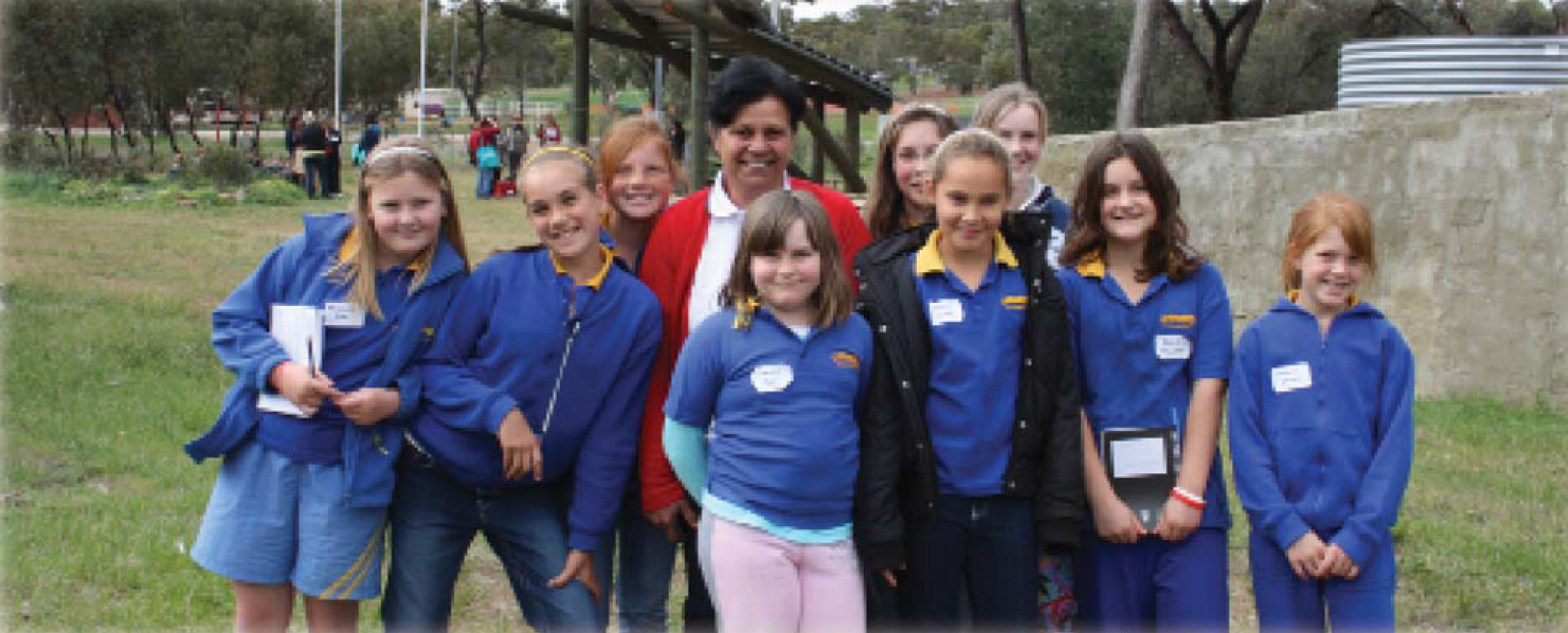
A drive to help educate school children about the environment and indigenous culture in the Wheatbelt has come to fruition.
More than 100 students from seven schools spent two days learning about the history of the region including visits to New Norcia, farms, rivers and key Aboriginal sites.
The idea behind the school camp with a difference came from Calingiri teacher Samantha Young.
“The children in our area have a lot of sporting activities offered to them, but there’s not much outside of that,” Samantha Young said.
“I had a student ask me if they could form an environmental club and the idea grew from there.
“We also wanted to involve other schools because we are isolated and it’s another way to make friends outside of our immediate towns.
” The seven schools included Mt Claremont, Toodyay, West Northam, Bolgart, Yerecoin, Goomalling and Calingiri. Funding for the camp came from Wheatbelt NRM, the Millennium Kids, The Board of Bendigo Bank; Goomalling and surrounding districts, Calingiri Landcare Association and the Shire of Victoria Plains.
The Millennium Kids is a unique organization run by children designed to encourage them to become environmental leaders.
The students, aged nine to 12, visited Aboriginal displays in New Norcia, Burlong Pool and the Northam Aboriginal Reserve.
During the visit to the Northam Reserve, the students learnt about Aboriginal culture from two local Elders and Wheatbelt NRM Aboriginal Facilitator, Rod Garlett.
The last baby born at the birthing place on the reserve was 70 years ago and Aboriginals lived there until the 1960’s.
The Elders talked about what the land meant for them, why the reserve was important and about the way they lived. Students were then separated into groups of boys and girls and taken to different parts of the reserve to highlight the separate men and women’s business in Aboriginal culture.
The girls were taken upriver to where a dip in a rock provided a birthing site for the women.
“This gave the students a really positive appreciation of Aboriginal culture,” Samantha Young said.
“Even some of the teachers and adults said it was the first time they had heard from an Elder about the way they used to live in harmony with the environment.”
A visit to the Toodyay Brook, a tributary of the Avon River, helped educate students about river health.
They conducted salinity, pH and water testing and investigated the health of the riverbank.
One of the highlights for students was a close encounter with a Stimson python.
Children were able to hold the reptile during a visit to Carrah Farms, near Calingiri.
The cropping property has a focus on conservation, including a Carnaby’s Cockatoo protection program.
Wheatbelt NRM’s Liz Kington said the camp achieved what it set out to do. “It really gave children an appreciation of their own environment,” Liz Kington said.
“They had a great time and learnt so much about Aboriginal connection to country, which was our intention.”

